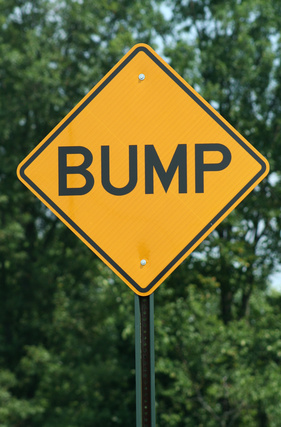
Traffic calming is a set of road design strategies intended to encourage motorists to reduce speeds, and to discourage high volumes of traffic in neighborhoods to better protect pedestrians, bicyclists, and residents. While traffic calming measures have been shown to help reduce vehicle speeds and congestions, some measures are unpopular.
Cities and towns have implemented traffic calming measures such as restrictions on vehicle types to certain roads, dedicated bike lanes, reducing traffic lanes, pavement treatments (such as cobbles or bricks), speed humps, rumble strips, roundabouts and mini-circles. Some are designed to only reduce speed or volume, while others attempt to address both.
The Federal Highway Administration studied several traffic calming measures and found that raised crosswalks, raised intersections and bulbouts (which are curbed intersections) were effective at reducing vehicle speeds and increasing the probability that a vehicle would yield to a pedestrian seeking to cross the street.
Among the disadvantages of traffic calming devices is that they can impede street cleaning and snow plowing, may impact drainage systems, and may slow emergency vehicle response times. A study by Portland, Oregon, on the impact of traffic calming on emergency vehicle response found that speed bumps would delay a vehicle by up to 9.4 seconds, and that traffic circles slow a vehicle by between 1.3 and 10.7 seconds.